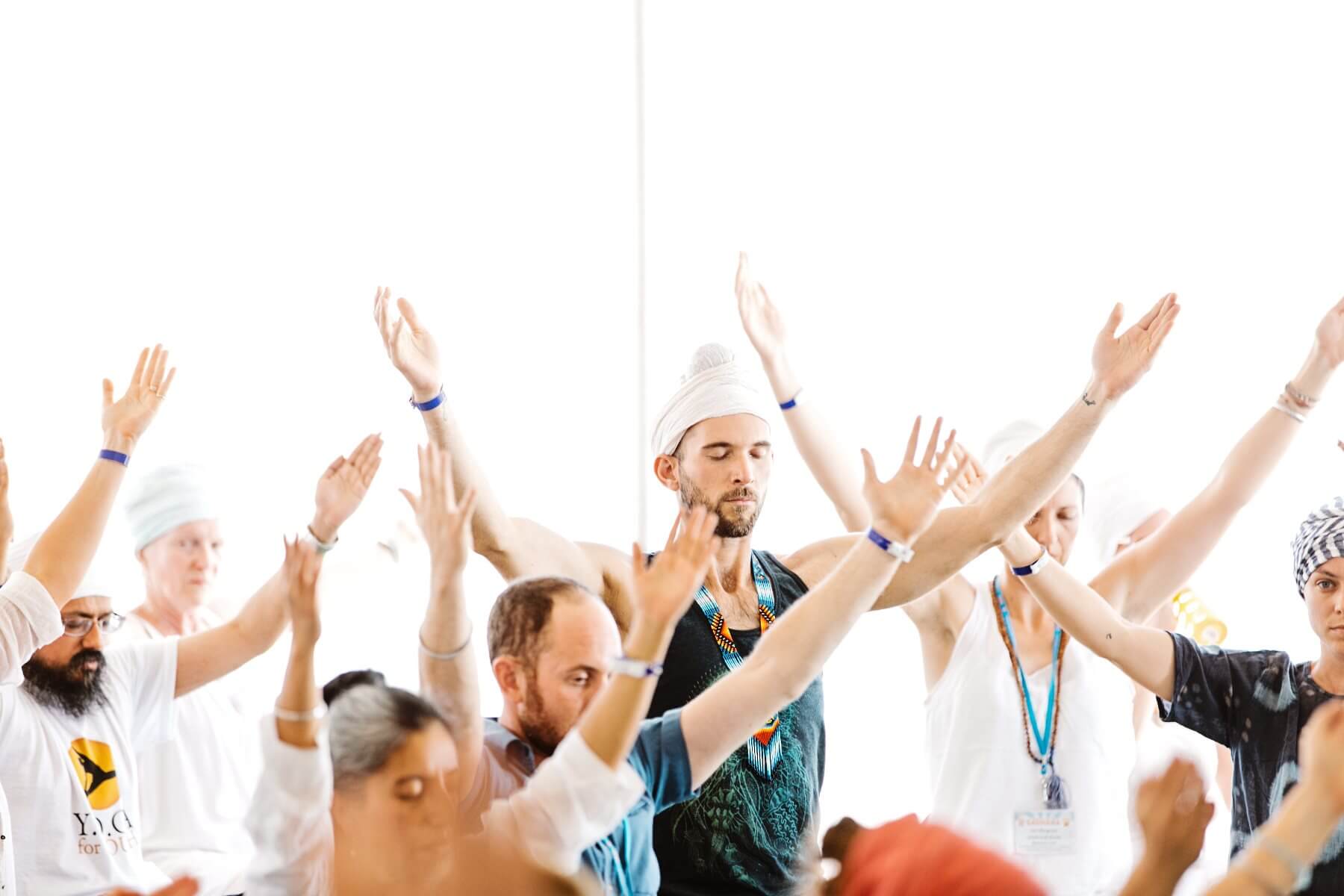From Darkness to Light: Addiction to Recovery with Kundalini Yoga
In the unconsciousness of our addictions, we are at a Distance from Ease. There is no ease in the body for we are disconnected from it. There is no ease in the mind because of the constant flow of garbage being sent to it from the subconscious. There is no ease in the spirit as we have lost sight of our Soul and its mission. The great tragedy of addiction is simply that we are divine beings that have utterly lost connection with that truth.
Imagine you come upon a blind man on the street who is begging for food. At his feet, a sumptuous banquet is laid out, but he cannot see it or even smell it. You explain to him that he does not need to beg for food, that he only needs to reach out and partake in the blessings at his feet. “You are wrong,” he tells you, “There is no banquet at my feet.” You are looking at a spread of incredible fruits and nuts, bread and cheeses. To you, it is plain as day, but the more you try to tell him that he does not need to beg for sustenance, the harder he fights to stick to the story that he does need to beg.
How can we be so lost as to not know who and what we are? The great majority of us are born into a world that tells us about limitations and smallness. From a young age, we are trained in our own powerlessness and spend the rest of our lives trying to find and express our power. When the quest for power—which is an archetypal journey—goes astray, it becomes one of the great drivers of acute addiction. Unless we are given a path with tools and practices that work to unravel our misunderstandings and replace them with the divine light of knowing which is also called faith, we run the risk of a life half-lived. We will always be hungry despite the bounty at our feet, always trying to solve a riddle that cannot be solved. That was me before I found Kundalini Yoga back in 2003.
I have written a fair amount about my teacher, Guruprem Singh Khalsa. Here, I will simply say, “Thank you, Guruprem, for teaching me about ‘Prehab,’ giving me the tools to uplift my consciousness and transform my inner life (which, of course, transformed my outer life).

Prehab is for everyone and everyone who learns the lessons of Prehab will never have to go to rehab like I did. I learned the lessons of Prehab fourteen years after rehab. Well, better late than never. In Prehab, we learn how to sit, how to stand and how to walk.
Sitting: Can you sit cross-legged on the floor or ground in comfort and ease? For most of us, the answer is no. In Prehab, we learn how to sit consciously, how to breathe consciously, how to connect literally with the Earth beneath us and to develop patience and the capacity to pass time productively. People who struggle with addictions do not have this critical skill.
Standing: You can tell nearly everything about a person by the way they “carry” themselves around. Are you able to stand with your pelvis and spine properly aligned, with your feet and legs actively pressing down into the Earth with your heart uplifted and your chest open so that your breath can flow freely and fully? This is called Tadasana or mountain pose. In Prehab, we practice this in order to develop the right relationship to gravity and the Earth, to be in divine alignment, and to come to know what we stand for in the world.
Walking: Once we know how to sit and stand we can now progress to the advanced practice of walking. How do you move through time and space? How is your relationship with gravity? Is there freedom in your body and breathing? Are you leaving a pleasant energy in your wake or does your manner of moving around bring discord rather than harmony? Most importantly, in Prehab we learn what we are walking toward. What is our destiny path and where does it lead? Once you know this in the very cells of your body, then you have realized who and what you are and addiction will have a challenge getting a foothold in you.
These are the lessons that have been passed down to me by my teacher and his teacher and so on. Working with the physical body is key. The meditation and breath-work is key. This practice makes day-to-day reality sweeter while delivering a person from darkness to light, from addiction to recovery, and from dis-ease to Ease. This is Kundalini Yoga and I wish it for you.
Your experience is important!
Share your wisdom with others like you. Leave your comment below